“Seismic Lateral Displacements”
Speakers and Abstracts
Professor T. Leslie Youd
Professor Emeritus, Brigham Young University
Factors Controlling Lateral Spread
Presentation Overview: In June 2018, Dr. Youd published a paper entitled, “Application of MLR procedure for prediction of liquefaction-induced lateral spread displacement” (Youd, T.L., 2018, “Application of MLR procedure for prediction of liquefaction-induced lateral spread displacement.” Journal of Geotechnical and Geoenvironmental Engineering, ASCE, v144, no. 6). This presentation adds to discussions introduced in that paper. The MLR procedure was developed by him and his students about 20 years ago and has been widely applied in engineering practice, including many of his consulting projects. Seven statistically significant parameters are incorporated in the MLR model. Those parameters along with viable ranges of values developed from case-history data, are: MW (6.4 to 8.0); R (horizontal distance from site to seismic source zone) (0.5km to 60km); W (free-face ratio) (0% to20%); S (ground slope) (0% to 6%), T15 (thickness of liquefiable layer with (N1)60 < 15)) (1 m to 16 m); F15 (average fines content within T15 layer) (0% to50%); D5015 (average mean grain size within T15 layer) (0.074 mm to 10 mm). Application of the MLR procedure with parametric applied values within these ranges yields predicted displacements within a factor of 2 of measured lateral spread displacements. This degree of accuracy is acceptable for most engineering applications and is as good as can be expected from analyses of observed field. Extrapolation to parametric values beyond these ranges adds uncertainty to predicted displacements. Some issues Dr. Youd will discuss include influence of fines content on displacement, use of CPT as well as SPT to define MLR parameters, influence of sediment type and age on susceptibility to lateral spread susceptibility.
Bio:
Education:
- BES Civil Engineering, 1964, Brigham Young University
- Ph.D. Civil Engineering, 1967, Iowa State University
- Post Doctoral Study, 1975-1976, Imperial College of Science and Technology, London
Honors:
- Member of the National Academy of Engineering (2005)
- Distinguished Member of the American Society of Civil Engineers (2006)
- Honorary Member of the Earthquake Engineering Research Institute (2009)
- H. Bolton Seed Medal, ASCE (2002)
- ISU Professional Achievement Citation in Engineering (PACE) award (2011)
Experience:
From 1967 to 1984, Dr. Youd was a Research Civil Engineer with U.S. Geological Survey, Menlo Park, California where he conducted studies in earthquake engineering with emphasis on liquefaction and ground failure. In 1984, Dr. Youd joined the Civil and Environmental Engineering faculty at Brigham Young University where he taught courses in geotechnical and earthquake engineering and continued his research on liquefaction and ground failure.
Dr. Youd has conducted post earthquake reconnaissance investigations following 20 major earthquakes on 5 continents. He led US Earthquake Engineering Research Institute (EERI) reconnaissance teams and edited reconnaissance reports following the 1993 Hokkaido, Japan and 1999 Kocaeli, Turkey earthquakes. He has performed subsurface investigations at many sites affected by liquefaction and has instrumented several sites likely to liquefy during future earthquakes.
He has developed widely used procedures for mapping liquefaction hazard, evaluating liquefaction resistance and estimating lateral spread displacement potential. Dr. Youd has authored or coauthored more than 170 papers published in the geotechnical literature.
Dr. Youd retired from BYU on December 31, 2003, but continues:
- Research and writing on liquefaction
- Expert consultant on projects involving liquefaction hazard
- Professional activities including serving on committees and providing peer reviews for papers and research proposals
Dr. Youd lives in Orem, Utah. He and his wife, Denice, are parents of five children, grandparents of 17 and great grandparents of 4.
Jonathan D. Bray, Ph.D., P.E., NAE
Faculty Chair, Earthquake Engineering Excellence, University of California, Berkeley
Seismic Slope Displacement Procedure for Shallow Crustal Earthquakes
Abstract: A new seismic slope displacement procedure is developed, which estimates shear-induced displacement for earth structures or natural slopes due to shallow crustal earthquakes along active plate margins. The proposed procedure utilizes 6711 two-component horizontal ground motion recordings from the updated NGA-West2 database to better capture this key source of uncertainty in assessing seismic performance. The fully coupled, nonlinear seismic slope displacement model captures the important influence of the system’s yield coefficient ky, its initial fundamental period Ts, the ground motion’s spectral acceleration at a degraded period of the slope taken as 1.3Ts, earthquake magnitude as a proxy for duration, and PGV and fault-normal effects for near-fault pulse motions. The procedure provides seismic slope displacement estimates consistent with observations from field case histories. A procedure for selecting the seismic coefficient used in pseudostatic slope stability analyses, which is consistent with an allowable seismic displacement threshold, is also presented. These procedures can be implemented rigorously within a probabilistic framework or used deterministically to evaluate the shear-induced component of seismic slope displacement.
Bio: Jonathan Bray, Ph.D., P.E., NAE is the Faculty Chair in Earthquake Engineering Excellence at the University of California, Berkeley. Dr. Bray is a registered professional civil engineer and has served as a consultant on important engineering projects and peer review panels. He has authored more than 350 research publications on topics that include liquefaction and its effects on structures, seismic performance of earth structures, earthquake ground motions, and earthquake fault rupture propagation. He created and led the Geotechnical Extreme Events Reconnaissance (GEER) Association. Dr. Bray is a member of the US National Academy of Engineering and has received several honors, including the Terzaghi Award, Ishihara Lecture, Peck Award, Joyner Lecture, Middlebrooks Award, Huber Research Prize, Packard Foundation Fellowship, and NSF Presidential Young Investigator Award.
Lawrence Burkett
Senior Structural Designer, Maffei Structural Engineering
Soil and foundation modeling in structural engineering practice
Abstract: From the perspective of structural engineering practice, this presentation will discuss key issues in modeling soil flexibility and soil structure interaction. Using examples from actual building designs, Lawrence will address:
- Representation in structural analysis of vertical and lateral soil flexibility, the circumstances in which such flexibility should be modeled, and the consequences of including the soil flexibility
- Site response analysis using linear and nonlinear methods, including explicit finite element modeling of the soil
Examples will include the new San Francisco International Airport air traffic control tower and the design of concrete core wall buildings. The presentation will also focus on how to interpret results and incorporate them into the design process.
Bio: Lawrence Burkett has 14 years of experience in the seismic design, evaluation, and retrofitting of steel and concrete structures, with expertise in performance-based and advanced methods. Lawrence has applied his expertise to the design and peer review of new tall buildings on the west coast, including the lead role in the 45% design of the new control tower at San Francisco International Airport. He has authored several technical publications including the National Earthquake Hazards Reduction Program (NEHRP) seismic evaluation and retrofit design example for unreinforced masonry buildings published in FEMA P-2006. Lawrence was a winner of the 2010 PEER/NEES Concrete Column Blind Prediction Contest, for the most accurate structural analysis predicting the failure characteristics of a full-scale concrete structure tested on the UCSD shake table.
Ahmed Elgamal
Professor, Associate Dean for Faculty Affairs, Jacobs School of Engineering, University of California, San Diego
Liquefaction-Induced Lateral Spreading: Ground Deformation and Effects on Embedded Foundations
Abstract: Insights gained from experimental observations will be presented. Recorded data sets from a series of experiments are analyzed collectively to document and track the evolution of lateral loading on deployed pile foundations. Ground and pile lateral displacement as well as excess pore pressure are discussed. It is observed that some of the highest pile lateral loads occur at the initial stages of lateral deformation, as the excess pore pressures approach the level of liquefaction. Thereafter, lateral load might decrease with further shear strength reduction and deformation in the liquefied stratum. For such scenarios, lateral ground deformation that continues to accumulate due to the shaking process may not always result in significantly larger loads on the embedded pile foundation.
Bio: Ahmed Elgamal is a Professor of Geotechnical Engineering at the University of California, San Diego (UCSD). Currently, he is serving as the School of Engineering Associate Dean for Faculty Affairs. Earlier, he chaired the Department of Structural Engineering (2003-2007). He received his Ph.D. in 1985 from Princeton University. In 1997, he joined UCSD after a post-doctoral appointment at the California Institute of Technology (CalTech), and faculty positions at RPI and Columbia University in New York.
His areas of research interest include liquefaction and effects on the built environment, large-scale soil-structure experimental and computational simulation, sustainability in Geomechanics, Information Technology (IT) applications, and system-identification procedures. He is author and co-author of over 300 technical publications. Over the years, he has consulted and provided professional services in the general areas of Geomechanics and Geotechnical Engineering for a number of national and international organizations. During 2010-2019, he served as Editor-in-Chief, Journal Soil Dynamics and Earthquake Engineering.
W.D. Liam Finn
Professor Emeritus, University of British Columbia
Estimating Lateral Spreading in a Probabilistic Ground Motion Environment
Abstract: Broadly speaking there are two approaches in common use for estimating the extent of lateral spreading in liquefiable ground during earthquakes. The first approach is exemplified by Youd et al (2002). They assembled an extensive database of lateral spreading observations and based on this they developed regression equations for the prediction of the extent of lateral spreading based on geotechnical profile data and the magnitude and distance of the triggering event. The second approach is based on cyclic shear strains developed in laboratory test specimens having a range of factors of safety against liquefaction. The lateral displacements in the field are calculated from the shear strains. Idriss and Boulanger (2008) give very lucid descriptions of the various strain based approaches. Both approaches have one thing in common, they are both deterministic and need adjustments in application, when used with probabilistic seismic ground motions. This paper shows two ways of making these adjustments, based the deaggregation method introduced by Finn and Wightman (2007) for assessing liquefaction potential in a probabilistic environment.
Bio: Click here for Dr. Finn’s bio.
Kevin W. Franke, Ph.D., P.E., M.ASCE
Associate Professor, Department of Civil and Environmental Engineering, Brigham Young University
Probabilistic Lateral Spread Hazard Analysis: A Performance-Based Approach to Predicting Lateral Spread Displacements
Abstract: Engineers commonly use empirical or semi-empirical lateral spread displacement prediction models in geotechnical design. However, confusion can occur when multiple potential seismic sources exist and/or the likelihood of various displacements occurring at the site of interest is desired. Franke and Kramer (2014) presented a performance-based assessment method for lateral spread that considers multiple potential seismic sources in a probabilistic framework to generate a lateral spread displacement hazard curve. This method is powerful, but requires a significant volume of probabilistic calculations that can be difficult for engineering practitioners to apply on routine projects. Ekstrom and Franke (2016) later presented a simplified, map-based approximation of the performance-based lateral spread method that is readily applicable on even the most routine of projects. This presentation will review and summarize these performance-based methods for predicting lateral spread displacements and their associated likelihood. The presentation will also demonstrate how these methods can be used to identify locations requiring additional site characterization in projects involving long linear infrastructure such as a pipeline (Franke et al. 2017).
Bio: Kevin W. Franke is an Associate Professor in the Department of Civil and Environmental Engineering at Brigham Young University. Kevin received his BSCE from Utah State University in 2004, his MSCE from University of Washington in 2005, and his Ph.D. from Brigham Young University in 2011. Kevin’s principal research focus relates to geotechnical/earthquake engineering. Kevin and his students are currently developing performance-based (i.e., probabilistic) methods for dealing with soil liquefaction and its associated hazards. Additionally, Kevin is an investigator in the Center for Unmanned Aircraft Systems (C-UAS), which is currently the only NSF-sponsored research center for unmanned aerial vehicles (UAVs). Kevin’s research focus in the Center deals with new and improved applications of small (UAVs) in monitoring infrastructure and performing post-disaster reconnaissance.
Prior to his current position at BYU, Kevin worked for 6 years as a professional civil engineering consultant for Kleinfelder, Inc. and URS Corporation. Kevin contributed to multiple significant projects throughout the western and central US, including Kennecott Utah Copper tailings impoundment, facilities at Los Alamos National Labs, California High Speed Rail, North Torrey Pines Bridge seismic retrofit, I-15 Corridor Reconstruction in Utah County, Sacramento Area Flood Control Levee Evaluations/Improvements, Levee improvements in New Orleans, Roscoe Wind Farm in Texas, Legacy Parkway in Utah, and multiple schools and hospitals throughout CA, OR, and WA.
Kevin is married to Ruby since 2000, and they have 6 children: Shari (16), Chad (14), Abby (12), Julie (10), Russell (8), and Eve (6). They also have a successful family YouTube channel called “8 Passengers” that currently has more than 2,200,000 subscribers and receives over 900,000 video views per day worldwide.
Professor Christian Ledezma
Associate Professor, Pontificia Universidad Católica de Chile
Liquefaction-induced lateral spreading for large-magnitude subduction earthquakes in areas with short source-to-site distances
Abstract: Prof. Youd’s well-known equation for prediction of liquefaction-induced lateral spread displacement relies on key elements of the problem, namely, geometry, soil properties, and ground motion intensity. The latter is based on two parameters (ranges of values from case-history data shown in parenthesis): moment magnitude Mw (6.4 to 8.0) and the horizontal distance from site to seismic source zone R (0.5 km to 60 km). In Chile, the direct application of this equation to large-magnitude subduction earthquakes is difficult not only because of the lack of data for earthquakes with Mw > 8.0 but, more importantly, because there are sites, such as those located in Chile, for which R is zero. If these values are directly used in the equation, the results tend to be unrealistically large when compared against field observations, even with the incorporation of the R* and R0 terms from Youd et al. (2002). In this talk, some preliminary recommendations are presented for discussion with respect to the complexity of the rupture process in such large-magnitude subduction events, and the closeness of sites located right above the rupture surface.
Bio: Christian Ledezma is an Associate Professor at the Pontificia Universidad Católica de Chile (PUC). He has a BS and an MS degree from that same university, and an MS and a Ph.D. degree from the University of California, Berkeley. He is currently the vice-president of ACHISINA, Chile’s Association of Earthquake Engineering, and an active member in the discussion and elaboration of Chilean seismic codes. At PUC, he teaches courses in geotechnical earthquake engineering and deep foundations. He currently serves PUC as an elected member of the School of Engineering Council. Dr. Ledezma has conducted post-earthquake reconnaissance investigations following the last three major Chilean earthquakes (Maule 2010 Mw8.8, Iquique 2014 Mw8.2, and Illapel 2015 Mw8.4), and the Mw7.1 Puebla 2017 Mexico earthquake.
Professor Manasori Hamada
Professor Emeritus, Waseda University
Strategies for The Enhancement of Earthquake- and Tsunami- Resistance of Industrial Parks in The Water-Front Area
Abstract: Industrial parks in the water-front areas have been repeatedly damaged by strong earthquake motions, high tsunamis, soil liquefaction and its induced ground displacement. Heavy damages to industrial parks by future earthquakes and tsunamis could make huge and serious impacts on the safety of the local societies and the living of the people. Furthermore, the damage might affect the economic activities of the nation, and its effect may expand world.
Therefore, the enhancement of earthquake- and tsunami- resistance of industrial parks has been recognized as one of most critical national issues for the preparedness against future natural disasters in Japan.
The speaker will review the damage by past earthquakes and tsunamis, and introduce an on-going national project by the Japanese government for the resilience- enhancement of industrial parks in the water-front areas around the highly populated ueban areas, such as Tokyo and Osaka.
Bio: Masanori Hamada is recognized as a well-known researcher for the earthquake engineering of critical infrastructures. He had engaged in the earthquake resistant design and the construction of bridges, dams, port and harbor structures, and nuclear power plants at Taisei Corporation (1968~1983) after receiving M. Eng. at University of Tokyo.
As a Professor of Marine Civil Engineering Dept. of Tokai University (1983~1994) as well as Civil and Environmental Engineering Dept. of Waseda University (1994~), he conducted researches on earthquake and tsunami resistant structures, and contributed to development of technologies and strategies for natural disaster mitigation. He also have carried out the investigation into the damage caused by natural disasters in the world, and based on these research results he recommended the strategies and the practices for disaster reduction for the governments and local societies.
As the President of Japan Society of Civil Engineers (2006~2007), of Institute for Social Science Society (1997~1999), and of Japan Association for Earthquake Engineering (2009~2010), he established cooperative and collaborative relationships with experts and researchers in oversea countries in order to reduce the natural disasters in the world, particularly in the Asian Region. Dr. Hamada organized many international research teams for reduction of natural disasters and has promoted those activities.
He chaired the Committee on International Cooperation for Natural Disaster Mitigation as a member of the Science Council of Japan, and issued the recommendations for the international assistances by the Japanese government, the public organizations, universities, and private sectors.
He established a non-profit organization of “Engineers Without Borders, Japan” after the 2004 Sumatra earthquake and tsunami as the president of the organization. He has been supporting the restoration and reconstruction works, and natural disaster educations by dispatching senior engineers and experts to the affected areas in China, Philippines, Indonesia, Bangladesh, Pakistan, Taiwan, and Turkey.
He inaugurated the chairman of the Asian Disaster Reduction Center in 2014, which was established in 1998 by 31 member countries in the Asia according to an United Nations General Assembly Resolution during the International Decade (1990~1999) for Natural Disaster Reduction (IDNDR). He led the ADRC’s activities on information sharing on the natural disasters in the world and on the policies for the recovery and reconstruction of the affected areas.
One of the specific topics of his researches in earthquake engineering field is soil liquefaction- induced large ground displacements and its caused damage to lifeline systems. He promoted an internationally joint research on this theme, and developed the design method and construction technologies to protect lifeline facilities, civil engineering structures and buildings against soil liquefaction and large ground displacements.
He authored and co-authored 5 technical books and more than 100 academic papers, and applied the research results to the practice for the mitigation of earthquake and tsunami disasters.
He established the Institute for Disaster Mitigation of Industrial Complex in 2014 and has promoted a national project for the enhancement of earthquake-and tsunami-resistance of industrial parks in water-front areas of Japan.
Juan M. Mayoral
Professor Researcher, Institute of Engineering, Universidad Nacional Autónoma de México
Coupled site, topographic, and soil-structure interaction effects in seismic-induced slope displacements
Abstract: Seismic waves can significantly amplify in firm soil with abrupt geometric changes due to topographic effects. Moreover, nonlinearities associated with soil layering, and geometrical interactions of the incoming waves can lead to changes in frequency content and duration within the slope. This talk presents the results of a numerical study aiming at establishing the impact of site, topographical, and soil structure interaction effects in seismic-induced lateral slope displacements on cemented silty sands. The effect of a 12-story building placed on top of the hill is also considered in the case study. Both subduction and normal earthquakes were considered in the analyses. The performance of the building-hill system was evaluated for this event, using finite difference models developed with the program FLAC3D. From the numerical study, the seismic response of the slope was evaluated, accounting for the site and topographical effects, as well as the seismic building-foundation-hill interaction in the distribution of factors of safety (i.e. capacity over demand), and ground deformations (i.e. lateral and vertical displacements) during the event. To establish the accuracy of the numerical model, the damage predicted by the numerical simulation in the building and the hill slope during the 2017 was compared with the post-earthquake reconnaissance observations. To study the effects of the frequency content, seismic intensity, and duration in the distribution of factor of safety and slope deformation patterns, the building-hill seismic response was further studied for subduction and normal events, considering target uniform hazard spectra with a return period of 250 years. From the results gathered in here, a clear dependency of the expected damage (i.e. lateral displacements) on the hill slope as a function of the seismogenic zone (i.e. subduction or normal) was observed.
Bio: Civil and Geotechnical Earthquake Engineer with 26 years of experience in geotechnical engineering and earthquake engineering projects, related to strategic infrastructure design, numerical modelling of geo-materials, earthquake engineering, seismology, and instrumentation. His experience ranges from conventional geotechnical engineering projects to highly specialized analyses of seismic soil-structure interaction and other earthquake engineering problems conducted for high-profile projects across the world. Dr. Mayoral has participated on geotechnical studies, foundation design, soil exploration and laboratory testing, and performed geotechnical field work supervision for high-end research projects. In addition, he has performed dynamic response analyses of earth dams, natural soil deposits, and manmade fills, including liquefaction risk assessment. In the area of seismic soil-structure interaction, Dr. Mayoral has analyzed foundation systems of LNG tanks, buildings, bridges, tunnels, tunnel shafts, underground structures, earth, tailing, and hardfill-dams, urban overpasses, metro lines, harbours, airport facilities, including runways, control towers and terminals, among others. In the area of structural engineering, he has conducted structural analysis of radial gates for gravity dams, intake towers, and concrete dams. In the area of seismology, he has been involved in seismic hazard assessments studies, and in particular the seismic microzonation of the Texcoco lake area. Recently, Dr. Mayoral participated as one of the leaders of the GEER-UNAM Reconnaissance team of the 19 September 2017 Mw7.1 Puebla-Mexico City Earthquake. He currently works as a researcher at the Institute of Engineering, UNAM, and as external consultant for several private companies. He has authored and co-authored more than (200) publications in scientific journals, conference proceedings, books and technical reports.
John S. McCartney, Ph.D., P.E., F.ASCE
Professor and Department Chair, Structural Engineering, University of California, San Diego
Limiting Values on Seismic Compression of Unsaturated Soils
Abstract: This presentation will focus on the seismic compression of unsaturated soil layers during earthquakes. Lessons learned from cyclic simple shear tests on unsaturated sands under both drained and undrained conditions will be summarized. Drained tests permit isolation of the effects of matric suction on the seismic compression, which was found to provide a restraining effect on volume change in the funicular region of the soil-water retention curve. Undrained tests permit evaluation of the combined changes in pore air and pore water pressure for specimens with different initial degrees of saturation, along with the effects of changing effective stress state. The results from the cyclic simple shear tests were extrapolated using different models to understand possible limits on the amount of seismic compression under different drainage conditions, with the goal of developing simplified design tools to estimate worst-case scenarios of seismic compression under different magnitudes of shaking events.
Bio: John S. McCartney is a Professor in the Department of Structural Engineering at the University of California San Diego, specializing in Geotechnical and Geoenvironmental Engineering. His research interests include unsaturated soil mechanics, geosynthetics engineering, and energy geotechnics. He has received several research awards, including the Walter L. Huber Research Prize from ASCE in 2016, the Arthur Casagrande Professional Development Award from ASCE in 2013, the J. James R. Croes medal from ASCE in 2012, the DFI Young Professor Award in 2012, the NSF Faculty Early Development (CAREER) Award in 2011, and the IGS Award and Young IGS Award from the International Geosynthetics Society in 2018 and 2008, respectively. He is currently the president of the North American Chapter of the International Geosynthetics Society (IGS-NA). He is an editor of ASCE Journal of Geotechnical and Geoenvironmental Engineering (JGGE), and is active on the editorial boards of several other geotechnical journals. He received BS and MS degrees in civil engineering from the University of Colorado Boulder in 2003 and a Ph.D. degree in civil engineering from the University of Texas at Austin in 2007.
Gilberto Mosqueda, Ph.D.
Professor, Structural Engineering, University of California, San Diego
Response of Seismically Isolated Structures subjected to Beyond Design Basis Shaking
Abstract: Seismic isolation has been proven as an effective strategy to protect critical facilities including Nuclear Power Plants (NPPs) from the damaging effects of horizontal earthquake ground shaking. The increased flexibility and resulting elongation of the natural vibration period of the structure leads to significant reductions in acceleration and forces transmitted to the structure above the isolation level at the expense of large lateral displacements in the isolation system. These large lateral displacements need to be accommodated by the isolation bearings while sustaining the weight of the structure above. Further, the isolated structure requires a large horizontal clearance at the basement level that is often limited by a moat wall that can also function as a hard stop for the isolation system. In the case of shaking beyond design basis earthquake, there is a potential for impact of the isolated structure to the moat wall with backfill, or failure of the bearings, that can be a significant safety concern. Through a combination of numerical and experimental studies, the stability of seismic isolation bearings and the effects of moat wall impact on the response of seismically isolated NPPs is evaluated. Experimental research includes hybrid simulation with testing of full scale seismic isolation bearings under combined three-dimensional seismic loads and shake table testing to evaluate pounding forces. The experimental data is being used to develop models able to capture the behavior of nuclear power plants for beyond design basis shaking.
Bio: Gilberto Mosqueda is a professor in the Department Structural Engineering at the University at California, San Diego. He received his Ph.D. from the University of California, Berkeley, M.S from Massachusetts Institute of Technology, and B.S. from the University of California, Irvine, all in civil engineering. He received the NSF CAREER award in 2008 and is currently on the editorial board for the journal Earthquake Spectra. The focus of his research is in the area of structural and earthquake engineering, particularly on understanding and improving the seismic performance of structural and nonstructural systems under seismic loads. Recent research has examined the seismic response of structural systems under extreme loads including the collapse of steel structures and limit states in seismic isolation system using hybrid simulation. He has participated in various reconnaissance mission following earthquakes around the world. Most recently he was a co-leader for the team organized by the Earthquake Engineering Research Institute to investigate damage from the 2017 Puebla-Morelos Earthquake in Mexico.
Tom O’Rourke
Thomas R. Briggs Professor of Engineering, School of Civil and Environmental Engineering, Cornell University
Next Generation Hazard Resilient Infrastructure
Abstract: The resilience of underground infrastructure to large ground deformation depends on the ability of pipelines, cables, and conduits to accommodate the geometric nonlinearities in soil by changing shape through axial elongation/compression, flexure, and rotation at joints. This lecture focuses on the development of the next generation hazard resilient infrastructure through large-scale testing and analytical and numerical modeling. Professor O’Rourke will describe how eight new pipeline and conduit systems have been developed and commercialized using a protocol of large-scale tests and fault rupture experiments that define and confirm performance under extreme conditions of ground deformation. The development and validation of analytical and numerical models for soil-structure interaction will be described. Fault rupture response spectra for seismic resistant (DI) ductile iron pipelines are presented that quantify and compare the performance of DI pipelines with push-on, restrained, and restrained axial slip joints at any orientation of the pipeline relative to the fault rupture plane under strike-slip faulting conditions. Next steps in the development of hazard resilient infrastructure are discussed, which include the incorporation of smart sensor technologies and signal processing.
Bio: Tom O’Rourke is the Thomas R. Briggs Professor of Engineering in the School of Civil and Environmental Engineering at Cornell University. He is a member of the US National Academy of Engineering, Distinguished Member of ASCE, International Fellow of the Royal Academy of Engineering, Member of the Mexican Academy of Engineering, and a Fellow of the American Association for the Advancement of Science. He authored or co-authored over 390 technical publications, and has received numerous awards for his research. His research interests cover geotechnical engineering, earthquake engineering, underground construction technologies, engineering for large, geographically distributed systems, and geographic information technologies and database management.
Robert Pyke, Ph.D., G.E.
Consulting Engineer
Improved Computation of Potential Lateral Spreading Displacements in Earthquakes
Abstract: For some time there has been great emphasis on the use of simplified methods for analyzing various phenomena in earthquake geotechnical engineering. Since these simplified methods were developed using simple parameters to define the soil properties and either limited time histories or broad averages of ground motion parameters, they include large uncertainties and show large scatter in the results.
This presentation outlines and illustrates an improved procedure for calculating earthquake-induced displacements associated with the phenomena of lateral spreading. Lateral spreading is the term that is widely used to describe the phenomenon whereby even a relatively flat slope, or horizontal ground adjacent to an open face, can move laterally because of liquefaction of the underlying soils.
There are two simplified procedures that are currently used in practice. Both are largely empirical procedures that rely on a number of case histories. The Youd, Hansen and Bartlett (2002) procedure uses SPT blowcounts as an indicator of the soils apparent relative density and the Zhang et al. (2004) procedure uses CPT tip resistance for the same purpose. Both show very wide scatter in the observed displacements to the point where one might reasonably question the usefulness of the procedures for forward prediction.
The procedure described in this paper is more complex and demanding of resources, but it is still simplified relative to a full three-dimensional analysis of site response using a soil model that computes permanent strains caused by complex cyclic loadings. The initial applications of the procedure suggest that it yields much more reasonable results and provides much greater insight into the problem than the existing simplified methods.
The procedure requires the use of cyclic simple shear tests to determine the permanent shear strains that develop in representative samples when a cyclic shear stress is applied to a test specimen consolidated with an initial shear stress. Site-specific design acceleration histories are then input to a one-dimensional nonlinear site response analysis which uses a soil model such as that described by Pyke (1979) that allows the development of permanent shear strains, even when the soil element is subjected to a symmetrical cyclic shear stress.
Use of the procedure is illustrated by an example from a large land development project on which it was found that the potential for significant lateral spreading could be controlled by overconsolidation of the natural alluvial material underlying an extensive fill.
Bio: Dr. Pyke was born and raised in Australia and received his bachelor’s degree in Civil Engineering from the University of Sydney. He then worked for the Commonwealth Department of Works in Canberra on various water resource projects before attending graduate school at the University of California, Berkeley. At Berkeley, he conducted original research for his Ph.D. under the guidance of the late Professor Harry Seed and formed a close relationship with Professor Seed, with whom he subsequently worked on a number of consulting assignments. Since 1977 Dr. Pyke has worked principally as an individual consultant on special problems in geotechnical and earthquake engineering.
Dr. Pyke’s primary academic interest is the study of site response and the behavior of soils under cyclic loadings. He has participated in a number of joint academic-industry research and development projects involving these subjects including the 1993 EPRI study that included the development of standard modulus reduction and damping curves, and the later comparison of nonlinear site response analysis programs led by Professor Jon Stewart of UCLA. His Ph.D. thesis was entitled “Settlement and Liquefaction of Sands Under Multi-Directional Shaking” and contains data that until recently has never been written up in a form that makes it more accessible to practicing engineers. However, that data is now embedded in a new multi-directional, nonlinear, effective stress site response program called TESS2. TESS2 also allows improved computation of potential lateral spreading displacements using an updated version of the HDCP soil model that Dr. Pyke first published in 1979.
Jose I. Restrepo
Professor, Structural Engineering, University of California, San Diego
Modeling and Design Issues in Reinforced Concrete Wall Buildings
Abstract: The collapse of the Alto Rio building during the 2010 Maule earthquake in Chile prompted the need to review the analysis, design and detailing of tall buildings reinforced with reinforced concrete walls. Current methods of design tend to underpredict the lateral displacement and shear force demands in these types of buildings. Such underpredictions were also observed in a test program on reinforced concrete walls which made use of the UC San Diego Large High Performance Outdoor Shaking Tables. This presentation will discuss the difficulties in modeling of wall buildings and will present key results of a blind prediction carried out to observe the community predictive capabilities. The presentation will also highlight the main finding of the analysis carried out to understand the collapse of the Alto Rio buildings.
Bio: Jose I. Restrepo is a Professor in Structural Engineering at UC San Diego. Professor Restrepo was lead structural engineer for the NEES UC San Diego Large High-Performance Outdoor Shake Table, the largest in the United States and second largest worldwide. There he has been leader or collaborator for several landmark large or full-scale experiments, including the testing of a full-scale 7-story bearing wall building. Prof. Restrepo is a fellow of the American Concrete Institute. He has received the Chester Paul Siess Award by the American Concrete Institute, the Charles C. Zollman, Martin Korn and Leslie D. Martin Awards from the Precast/Prestressed Concrete Institute, the James Cooper Award from the U.S. Federal Highway Administration and the Alfred Noble Award and the Charles Pankow Award of the American Society of Civil Engineers. Dr. Restrepo also holds an adjunct faculty position at the International School for the Reduction of Seismic Risk at the University of Pavia, Italy.
Kyle Rollins
Professor, Department of Civil and Environmental Engineering, Brigham Young University
Evaluation of lateral spread prediction equations for M8+ earthquakes
Abstract: Because earthquakes larger than Mw8 are relatively rare, empirical models for predicting lateral spread displacement have not been calibrated for larger magnitude events. In this paper, lateral spread case histories from the Mw8.8 Maule Chile earthquake and the Mw9.0 Tohoku earthquake are used to help understand the strengths and weaknesses of various empirical models for predicting lateral spread displacements. Predictions from empirical models commonly used in engineering practice are compared with measured displacements. In addition, recommendations for improving the accuracy of these models are suggested. The model that best matched the measured displacements used local attenuation relationships to predict ground motions rather than simple magnitude and distance terms. In contrast, models that used magnitude and distance directly often predicted unreasonably large displacements for subduction zone earthquake where the horizontal distance to the zone of energy release was often zero over large areas. Nevertheless, soil properties such as the T15 thickness, the fines content, and the mean grain size were useful in predicting displacement. Models that used shear strains typically over-predicted measured displacements but using a depth-based reduction factor improved accuracy. Similarly, current CPT-based empirical equations generally over-predicted measured displacements.
Bio: Kyle Rollins received his BS degree from Brigham Young University and his Ph.D. from the University of California at Berkeley. After working as a geotechnical consultant, he joined the Civil Engineering faculty at BYU in 1987 following after his father who was previously a geotechnical professor. His research has involved geotechnical earthquake engineering, deep foundation behavior, bridge abutment behavior, collapsible soils and soil improvement techniques. ASCE has recognized his work with the Huber research award, the Wellington prize, and the Wallace Hayward Baker award. In 2009, he was the Cross-Canada Geotechnical lecturer for the Canadian Geotechnical Society. He received the Jorj Osterberg Award from the Deep Foundations Institute in 2014.
Lisheng Shao, Ph.D., P.E., G.E.
Chief Engineer, Hayward Baker, Inc. Western Region
Soil Mixing Improvement for Bridge Abutment under Seismic Loads
Abstract: Soil mixing improvements have been widely used to mitigate soil liquefaction and lateral spreading hazards, to increase foundation bearing capacity, reduce settlement, and improve slope stability, etc. This presentation provides an outline of design procedures and a case history, West Dowling Bridge Abutments improvement and performance during the Anchorage earthquake on November 30, 2018.
Bio: Dr. Shao serves as the chief engineer of Hayward Baker, Inc. Western Region, in charge of ground improvement design, analysis, quality control, and technology development. His work focused on liquefaction mitigation, soft soil improvement under heavy building structures, excavation support, and dam rehabilitation, by vibro stone columns, soil mixing, jet grouting, micropiles, compaction grouting, fracture grouting and permeation grouting, etc. He joined Hayward Baker, Inc in 1997.
He is a Professional Engineer and Geotechnical Engineer registered in California, North Carolina, Hawaii, and Alberta. He received his Ph.D. degree in 1995 from North Carolina State University. He has published over 50 technical papers in geotechnical engineering.
Jonathan P. Stewart, Ph.D., P.E.
Professor, Civil and Environmental Engineering, University of California, Los Angeles
Bridge Foundations and Lateral Spreads: Case History and Analysis Guidelines
Abstract: Two parallel adjacent river-crossing bridges performed differently in response to strong shaking (peak ground acceleration ~0.27g) and liquefaction-induced lateral spreading during the 2010 M7.2 El Mayor-Cucapah earthquake. A railroad bridge span collapsed, whereas the adjacent highway bridge survived with one support pier near the river having modest flexural cracking of cover concrete, and a second that settled approximately 50 cm. Cone penetration and geophysical test results are presented along with geotechnical and structural conditions evaluated from design documents. An equivalent-static beam-on-nonlinear-Winkler foundation analysis accurately predicts observed responses when liquefaction-compatible inertia demands are represented as spectral displacements that account for resistance from other bridge components. Pier columns for the surviving bridge effectively resisted lateral spreading demands in part because of restraint provided by the superstructure. Collapse of the surviving bridge is predicted when liquefaction-compatible inertial demands are computed for the individual bent in isolation from other components, and are represented by forces instead of displacements. The poor performance of the settled pier column resulted from bearing capacity failure in a thin liquefiable layer at the shaft tip.
Bio: Click here to read about Dr. Stewart.
Ikuo Towhata
Professor Emeritus, University of Tokyo
Earthquake-induced landslides
Abstract: Earthquake is one of the most important causes of slope failure. One peculiar point about it is that the seismic effect on slope is associated with other causative mechanisms of slope failures and the joint effect triggers the slope failure. Due to this reason, it is not easy to demonstrate the special feature of earthquake-induced landslides probably except that the slope instability is initiated near the mountain summit where seismic energy is focused, inducing strongest shaking. This is in contrast with other kinds of slope failure that start at the knick point where the slope gradient changes.
An interesting cause of landslide related with earthquake was recognized in 1966 in Matsushiro, Japan, where earthquake swarm continued for more than one year. This swarm was associated with boiling of significant amount of water from deep depth. This water came out of magma intrusion, became light when resolved gas evaporated after pressure reduction, came up towards the surface, reduced the effective stress in potential seismic faults, caused many small earthquakes as a consequence and induced distortion at the ground surface. Uplift of the ground surface induced many cracks at the surface and, consequently, landslide occurred at Makiuchi site. Finding this landslide, the author became interested in the effect of water boiling or artesian water pressure on slope stability.
The author encountered seismically-induced slope disaster in which failed slopes had been undergoing artesian pressure. The negative effects of the artesian water pressure are increased probability of landslide under gravity as mentioned above, higher liquefaction potential because of reduced effective stress, and easier lateral flow over long distance due to reduced effective stress and shear resistance.
Considering these issues, the author is developing a methodology to assess the risk of combined disaster under artesian pressure and seismic effects.
Bio:
Professor Emeritus, University of Tokyo
Distinguished Visiting Professor, IIT Bombay, Mumbai, India, till December 2016
JICA Expert, IIT Hyderabad, India, till March 2017
President of Japanese Geotechnical Society 2014-2016
Vice President for Asia, ISSMGE 2013-2017
Education:
- Bachelor of Engineering: Department of Civil Engineering, University of Tokyo, March, 1977
- Master of Engineering: Department of Civil Engineering, University of Tokyo, March, 1979
- Doctor of Engineering: Department of Civil Engineering, University of Tokyo, March, 1982
Academic Experiences:
- 1982.4.1-1982.9.30 Research Associate, University of Tokyo.
- 1982.10.1-1983.10.31 Post-Doctoral Fellow, University of British Columbia.
- 1983.11.16-1985.4.22 Lecturer, University of Tokyo.
- 1985.4.23-1987.4.22 Assistant Professor, Asian Institute of Technology, Bangkok.
- 1986 – Associated Faculty of Chulalongkorn University, Bangkok.
- 1987.4.23-1987.7.31 Lecturer, University of Tokyo.
- 1987.8.1-1994.7.15 Associate Professor, University of Tokyo.
- 1989 – Associated Research Fellow at the Public Works Research Institute, Ministry of Construction.
- 1994.7.16-2015.3.31 Professor, University of Tokyo
- 2016.6 Professor Emeritus, University of Tokyo
- 2015.4.1-Present Visiting Professor, Kanto Gakuin University, Yokohama, Japan
- 2016.7.25-12.19 Distinguished Visiting Professor, Indian Institute of Technology, Bombay
Also working for three private sectors: Director of Tohata and Associates (architectural office), Chair of Seirin-sha Company (real estate management) and Technical Advisor for Chuo Kaihatsu Corporation (geotechnical consultant)
Affiliations and Memberships:
- Member of the Japanese Geotechnical Society
- Life member of the Southeast Asian Geotechnical Society
- Member of the International Society for Soil Mechanics and Geotechnical Engineering
- Fellow Member of the Japan Society of Civil Engineers
- Member of the Japan Association for Earthquake Engineering
- Member of the Japan Landslide Society
- Honorary Member of the Nepal Geotechnical Society
- Associate Member of Science Council Japan (2014-2020)
- Life Fellow of the Indian Geotechnical Society
- Fellow of the Japan Federation of Engineering Societies
- 2009-2012 Vice President, Japan Association for Earthquake Engineering
- 2013-2017 Vice President for Asia, International Society for Soil Mechanics and Geotechnical Engineering
- 2014-2016 President, Japanese Geotechnical Society
Awards:
- 1985 – Japanese Society of Soil Mechanics and Foundation Engineering, Award for the Best Paper by Young Authors
- 1985 – Awarded by the Minister of Education for the best performance in education by correspondence (in the field of electric engineering.)
- 1997 – Japanese Geotechnical Society, Award for the Best Paper of the Year 1996
- 1998-1999 – Shamsher Prakash Research Award, USA, of Soil Dynamics.
- 2000 – Japanese Geotechnical Society, Award for Distinguished Research Products
- 2000 – One of the best twelve papers out of 600 at GeoEng2000 Conference at Melbourne
- 2004 – Japanese Geotechnical Society, Award for the Best Paper of the Year 2003
- 2009 – Japan Society of Civil Engineers; Best book publication award
- 2015 – Japanese Geotechnical Society; Technological development award
- 2016 – Seelye Fellowship, University of Auckland, New Zealand
- 2018 – Shamsher Prakash ISET Award 2018 for Significant Contribution in Geotechnical Earthquake Engineering, the Indian Society of Earthquake Technology
- 2019 – Ishihara Lecturer, International Society for Soil Mechanics and Geotechnical Engineering
Fields of Major Interest:
- Deformation characteristics of cohesionless soils.
- Dynamic analysis of earth structures during earthquakes.
- Permanent displacement of ground caused by seismic liquefaction.
- Soil improvement by densification and grouting
- Microscopic Observation of Granular Behavior of Sand Subjected to Shear
- Dynamics of landslide and debris flow.
- Mechanical Properties of Municipal Waste Ground
- Seismic performance-based design of geotechnical structures
- Mitigation of rainfall-induced slope instability
- Geotechnical contribution towards solution and decommission of Fukushima No. 1 Nuclear Power Plant that was damaged by tsunami in 2011
Recent Activities:
- Recovery and retrofitting for future of infrastructures (residential islands, river levees and Fukushima No.1 Nuclear Power Plant) that were damaged by the 2011 Tohoku gigantic earthquake; liquefaction and nuclear disaster.
- International consulting on seismic safety of dams and embankments.
Publications:
More than 400 English papers in international journals and conferences, including a comprehensive book on geotechnical earthquake engineering:
Ikuo Towhata (2008) Geotechnical Earthquake Engineering, ISBN 978-3-540-35782-7, Springer Verlag – Berlin Heidelberg.
Seven interesting papers in Towhata’s life by personal choice:
- Ishihara, K. and Towhata, I. (1980) One-dimensional soil response analysis during earthquakes based on effective stress method, Journal of the Faculty of Engineering, University of Tokyo (B), Vol. XXXV, No. 4, pp. 655-700 (computer code for numerical analysis).
- Towhata, I. and Ishihara, K. (1985) Shear work and pore water pressure in undrained shear, Soils and Foundations, Vol. 25, No. 3, pp. 73-84 (experimental verification of unique correlation between excess pore water pressure development and accumulated strain energy).
- Towhata, I. and Ishihara, K. (1985) Modelling soil behaviour under principal stress axes rotation, of 5th Int. Conf. Numerical Methods in Geomechanics, Nagoya, Japan, Vol. 1, pp. 523-530 (constitutive model not based on elasto-plasticity formulation).
- Towhata, I., Orense, R.P. and Toyota, H. (1999) Mathematical principles in prediction of lateral ground displacement induced by seismic liquefaction, Soils and Foundations, Vol. 39, No. 2, pp. 1-19 (closed-form solution of lateral flow of liquefied subsoil based on Lagrangean equation of motion).
- Itoh, T., Towhata, I., Kawano, Y., Kameda, M., Fukui, S., Koelsch, F. and Yonai, Y. (2005) Mechanical properties of municipal waste deposits and ground improvement, XVIth International Conference on Soil Mechanics and Geotechnical Engineering, Osaka Vol. 4, pp. 2273-2276 (similarity of mechanical behaviors of municipal solid waste and soil).
- Tamari, Y. and Towhata, I. (2003) Seismic soil-structure interaction of cross sections of flexible underground structures subjected to soil liquefaction, Soils and Foundations, Vol. 43, No. 2, pp. 69-87 (seismic earth pressure on retaining walls).
- Towhata, I., Taguchi, Y., Hayashida, T., Goto, S., Shintaku, Y., Hamada, Y. and Aoyama, S. (2017) Liquefaction perspective of soil ageing, Geotechnique, Vol. 67, No. 6, pp. 467-478 (case history studies on increase of liquefaction resistance of soil with age).
Read more
Joseph Wartman
H.R. Berg Professor of Civil and Environmental Engineering, University of Washington
Regional-Scale Forecasting of Coseismic Landslide Displacement
Abstract: Moderate-to-large magnitude earthquakes typically trigger thousands to tens-of-thousands of coseismic landslides over regions exceeding 10,000 km2. These landslides can severely impact the built, social and natural environments by producing, mobilizing, and transporting debris, denuding slopes, and burying roadways and other critical infrastructure. Landslide hazards have traditionally been analyzed at the site-specific scale. However, there is a growing interest, particularly in the policy realm, in assessing seismic landslide hazards over large spatial scales. A key benefit of regional-scale analysis is that it can capture “system-level” performance and spatial propagation of risk within a region. This aspect is essential when considering the effects of landslides on geographically distributed critical infrastructure systems, which are highly susceptible to damage from slope failures. This talk will describe a new physically-based coseismic landslide hazard assessment method, called the multimodal method, to forecast coseismic displacement of slopes across large regions. Several case studies will be presented illustrating how this method can inform seismic risk assessment.
Bio: Joseph Wartman directs the Natural Hazards Reconnaissance Facility (known as the “RAPID”) at the University of Washington, where he is the H.R. Berg Professor of Civil and Environmental Engineering. A former editor of the ASCE Journal of Geotechnical and Geoenvironmental Engineering, he is the author of over 100 professional articles on geologic hazards. In addition to his technical publications, Wartman’s essays and op-eds have appeared in the New York Times, the Seattle Times, and the Conversation, among other mainstream media venues. He is the recipient of several research honors awards including, most recently, the Geologic Society of America’s Burwell Award in engineering geology.
Nozomu Yoshida
Professor, Research Advancement and Management Organization, Kanto Gakuin University
Professor Emeritus, Tohoku Gakuin University
Simplified Method to Evaluate Liquefaction-Induced Flow
Abstract: Two topics are presented.
At first, fundamental concept of the analysis of liquefaction-induced flow. In the past, it is recognized as a stability criteria, in which post liquefaction behavior is classified into, for example, unlimited flow or limited flow; sometimes it is written as flow and non-flow, or liquefaction and limited liquefaction. It is shown that actual post liquefaction phenomena cannot be explained by this criteria. Then two different criteria are proposed; the one is stability criterion and the other is deformation criterion, and prediction of displacement is possible because of the latter criterion.
Based on deformation criterion, stress-strain curve is modeled into bi-linear model whose shape are either convex or concave depending on soil type. The stiffness of the stress-strain curve is evaluated by laboratory test and by back analysis of the earthquake damage. Here we focused on the final stage of the deformation after liquefaction at which there is no inertia force. They analysis are made by the switch on gravity analysis or layer construction analysis.
A new elastic-plastic stress-strain models are developed for both liquefied and nonliquefied layers for this analysis. In addition, method how to escape hourglass instability is discussed.
Finally, a case study is shown by which proposed method have sufficient accuracy.
Bio:
Education:
- 1972 – Graduated from Faculty of Engineering, Kyoto University
- 1974 – Obtained a degree of Master of Engineering from Kyoto University
(Earthquake Resistant Structure Section of Disaster Prevention Research Institute)
- 1977 – Completed the academic studies and satisfied the residence requirements as partial fulfillment for the degree of Doctor of Engineering, Kyoto University
- 1985 – Granted a degree of Doctor of Engineering by Kyoto University
Thesis “A study on the elastic-plastic behavior of steel braces”
Work Experiences:
- 1977–1979 – Research Fellow, Earthquake Resistant Structures Section of Disaster Prevention Research Institute, Kyoto University
- 1979–2002 – Sato Kogyo co., Ltd.
- 2002–2005 – Oyo Corporation
- 2005–2017 – Tohoku Gakuin University
Department of Civil and Environmental Engineering
- 2017– – Kanto Gakuin University
Research Advancement and Management Organization
Read more
Katerina Ziotopoulou, Ph.D.
Assistant Professor, Department of Civil and Environmental Engineering, University of California, Davis
Numerical modeling of ground deformations at Balboa Blvd. in the 1994 Northridge earthquake
Abstract: Developing the ability to predict liquefaction-induced ground deformation and its effects on infrastructure is key in our ability to prepare for future earthquake events. During the 1994 Northridge earthquake, ground deformation caused the breakage of water and gas pipelines at the Balboa Blvd., which produced craters and fire. Such unexpected failures typically lead to conservative design approaches to prevent similar consequences. This presentation will focus on the numerical simulation of the Balboa Blvd. case history, where significant earthquake-induced ground deformations were observed. The availability of soil, ground motion, and post-earthquake damage records, will be presented and utilized as a validation basis of Nonlinear Deformation Analyses (NDAs). Results will be presented from NDAs on stochastic realizations of interlayered sand and clay stratigraphy estimated from available CPT data. The realizations are produced using a transition probability geostatistical approach, representative soil properties are selected by statistical examination of the properties estimated from the CPT data, and the constitutive models PM4Sand and PM4Silt are used for the sand-like and clay-like materials respectively. Computed lateral displacements will be compared to field observations. These comparisons illustrate that a realistic representation of the site and the dynamic loading conditions can be important for evaluating potential deformations in this site, and could inform future decision-making.
Bio: Katerina Ziotopoulou joined the Department of Civil and Environmental Engineering at University of California, Davis in August of 2016. Prior to this appointment, she was an Assistant Professor at the Charles E. Via Jr. Department of Civil and Environmental Engineering at Virginia Tech for two years. She received her Ph.D. and MS degrees in Civil Engineering from the University of California, Davis, and her undergraduate Diploma degree in Civil Engineering from the National Technical University of Athens, Greece. Currently, her research focuses on the numerically and experimentally studying ground failure due to liquefaction during earthquakes and its mitigation. Her goals are to: (a) improve our understanding of the response of liquefiable soil-structure systems, (b) perform reliable numerical simulations, and develop and deliver usable numerical simulation tools, and through these (c) facilitate advances in the performance-based design across a range of geosystems. Her work is currently funded by the National Science Foundation, the Center for Biomediated and Bioinspired Geotechnics, the Transportation Research Board, and Caltrans. In parallel, she is also working on developing mentoring practices and tools focused on promoting and supporting underrepresented groups.


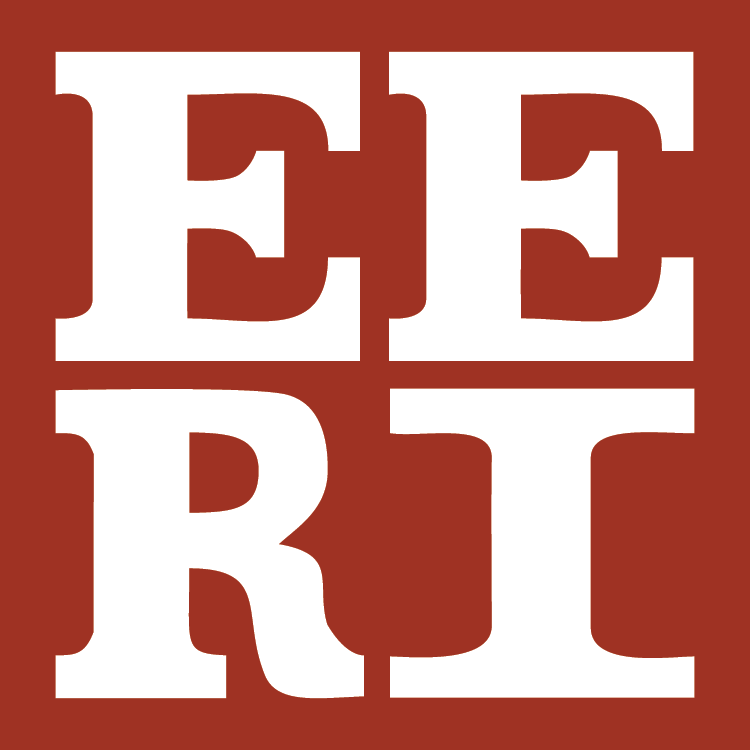
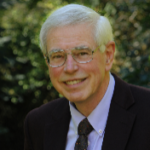
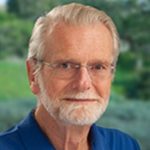

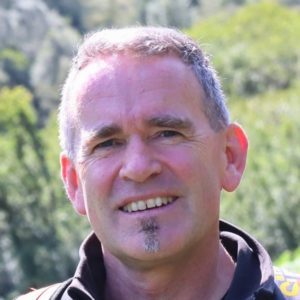
 Senior Principal, Degenkolb Engineers
Senior Principal, Degenkolb Engineers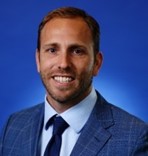
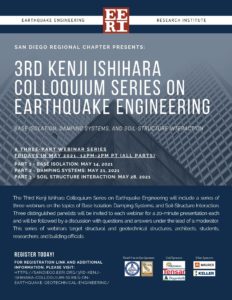

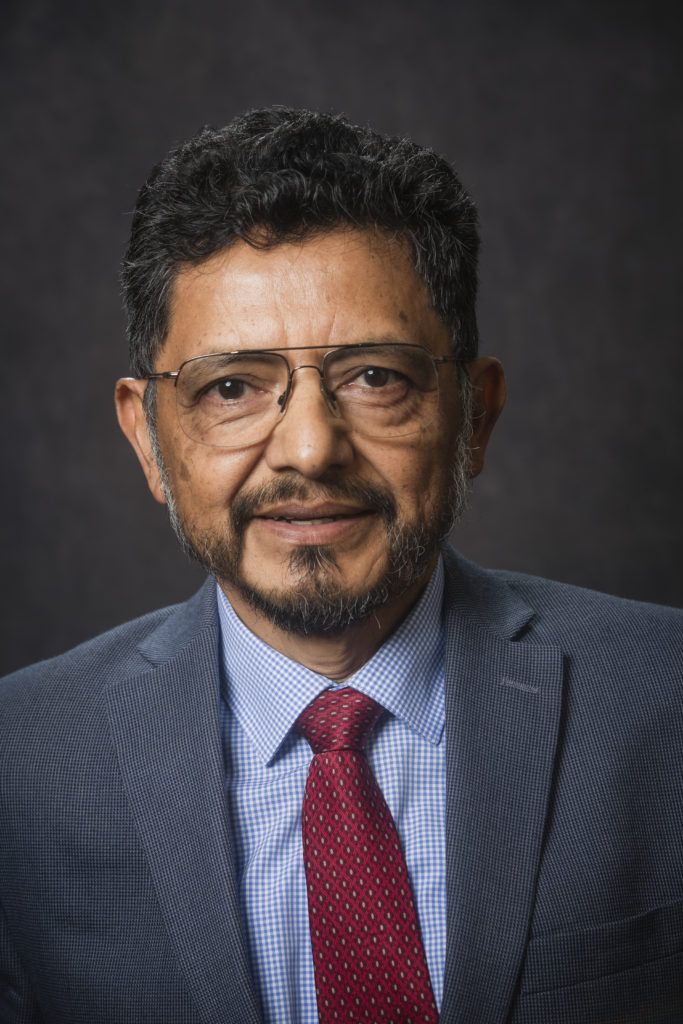 Jorge F. Meneses, Ph.D., P.E., G.E., D.GE, F.ASCE, Principal Geotechnical Engineer, RMA Group, Inc., has more than 30 years of consultancy, project management, research, and teaching experience, in both private industry and research institutions in the field of geotechnical and earthquake engineering. He has been involved in numerous projects serving as a technical lead in geotechnical earthquake engineering and foundation engineering across the country and various markets including water, nuclear, transportation, high rise buildings, energy, schools, hospitals, commercial and industrial.
Jorge F. Meneses, Ph.D., P.E., G.E., D.GE, F.ASCE, Principal Geotechnical Engineer, RMA Group, Inc., has more than 30 years of consultancy, project management, research, and teaching experience, in both private industry and research institutions in the field of geotechnical and earthquake engineering. He has been involved in numerous projects serving as a technical lead in geotechnical earthquake engineering and foundation engineering across the country and various markets including water, nuclear, transportation, high rise buildings, energy, schools, hospitals, commercial and industrial.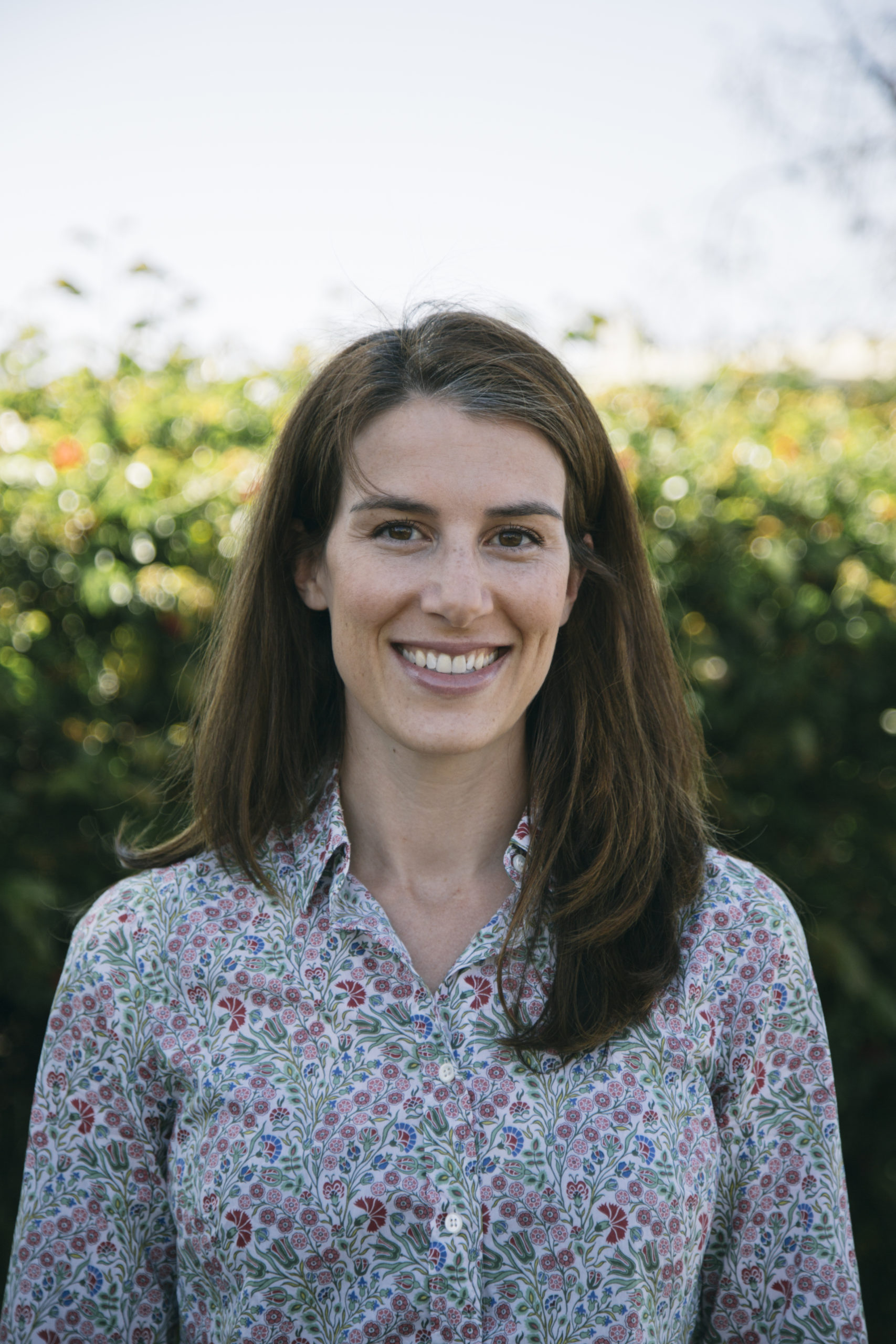 With over 12 years of experience, Ms. Chang has worked on a broad range of projects in the field of geotechnical engineering. Her areas of expertise include design of foundations and earth retaining structures, and geomechanical numerical modeling and analyses. She has performed geotechnical forensic evaluations for landslides and repair of failed slopes; structural distress induced by seismic events and other adverse geologic conditions; performance of floor level studies, foundation condition surveys, and crawlspace observations for damage assessments.
With over 12 years of experience, Ms. Chang has worked on a broad range of projects in the field of geotechnical engineering. Her areas of expertise include design of foundations and earth retaining structures, and geomechanical numerical modeling and analyses. She has performed geotechnical forensic evaluations for landslides and repair of failed slopes; structural distress induced by seismic events and other adverse geologic conditions; performance of floor level studies, foundation condition surveys, and crawlspace observations for damage assessments.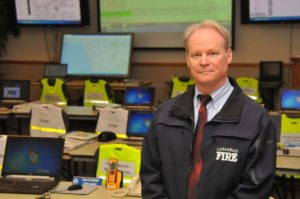 David Harrison is the Emergency Preparedness Manager for the City of Carlsbad, a position he has held for twelve years. David coordinated the city’s response to the 2007 San Diego County Firestorm, the 2010 H1N1 flu pandemic, and 2011 regional power outage. He provided response support during an active shooter attack in 2010. During the 2014 Poinsettia Wildfire which ravaged Carlsbad, he coordinated evacuations, sheltering and incident response support operations from Carlsbad’s EOC. During the 2017 Lilac Wildfire, he coordinated evacuation and sheltering support for neighboring jurisdiction evacuees.
David Harrison is the Emergency Preparedness Manager for the City of Carlsbad, a position he has held for twelve years. David coordinated the city’s response to the 2007 San Diego County Firestorm, the 2010 H1N1 flu pandemic, and 2011 regional power outage. He provided response support during an active shooter attack in 2010. During the 2014 Poinsettia Wildfire which ravaged Carlsbad, he coordinated evacuations, sheltering and incident response support operations from Carlsbad’s EOC. During the 2017 Lilac Wildfire, he coordinated evacuation and sheltering support for neighboring jurisdiction evacuees.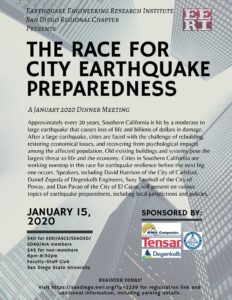
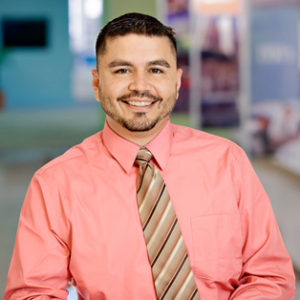 Daniel Zepeda received his Master’s degree in Structural Engineering from the University of California, Berkeley, he is a licensed California Structural Engineer, and a Principal with Degenkolb Engineers. With over 15 years of experience in seismic evaluation and seismic strengthening of existing buildings, Daniel’s project breadth spans large medical centers, civic buildings, and privately owned structures. Daniel has traveled to multiple countries to conduct post-earthquake reconnaissance. He is past chair of SEAOC EBC and current SEAOSC EBC co-chair. Daniel is also a member of the SEAOC Resilience committee, SEAOC Functional Recovery working group, CALBO’s Structural Safety Committee, and an associate member of ASCE 41-23. He is also assisting multiple cities in the implementation of their seismic ordinance programs including Santa Monica, Beverly Hills, West Hollywood, Pasadena, Culver City, and Los Angeles.
Daniel Zepeda received his Master’s degree in Structural Engineering from the University of California, Berkeley, he is a licensed California Structural Engineer, and a Principal with Degenkolb Engineers. With over 15 years of experience in seismic evaluation and seismic strengthening of existing buildings, Daniel’s project breadth spans large medical centers, civic buildings, and privately owned structures. Daniel has traveled to multiple countries to conduct post-earthquake reconnaissance. He is past chair of SEAOC EBC and current SEAOSC EBC co-chair. Daniel is also a member of the SEAOC Resilience committee, SEAOC Functional Recovery working group, CALBO’s Structural Safety Committee, and an associate member of ASCE 41-23. He is also assisting multiple cities in the implementation of their seismic ordinance programs including Santa Monica, Beverly Hills, West Hollywood, Pasadena, Culver City, and Los Angeles.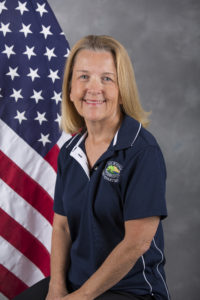 American Red Cross in 1995. In her twenty years with the Red Cross, she responded to multiple disasters throughout the nation to lead volunteers in providing much-needed relief to the affected communities. In 2015, Susy transitioned to local government and accepted the job as Disaster Preparedness Coordinator for the City of Poway. In this role, she writes and updates emergency plans, trains city staff to work in the Emergency Operations Center, and trains and leads over 100 local volunteers to respond to emergencies. Most recently, she led the Bulk Distribution efforts for the City’s response to the Boil Water Advisory. More than 120 volunteers donated over 1800 hours, and distributed more than 28,000 cases of water in six days. Susy lives in Santee and has a Bachelor’s Degree from San Diego Christian College in Counseling/Psychology.
American Red Cross in 1995. In her twenty years with the Red Cross, she responded to multiple disasters throughout the nation to lead volunteers in providing much-needed relief to the affected communities. In 2015, Susy transitioned to local government and accepted the job as Disaster Preparedness Coordinator for the City of Poway. In this role, she writes and updates emergency plans, trains city staff to work in the Emergency Operations Center, and trains and leads over 100 local volunteers to respond to emergencies. Most recently, she led the Bulk Distribution efforts for the City’s response to the Boil Water Advisory. More than 120 volunteers donated over 1800 hours, and distributed more than 28,000 cases of water in six days. Susy lives in Santee and has a Bachelor’s Degree from San Diego Christian College in Counseling/Psychology.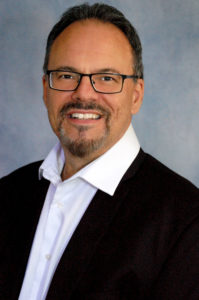 Dan Pavao is the Building Official and Fire Marshal for the City of El Cajon. Dan has chaired the California Building Officials Disaster Preparedness Committee as well as the Disaster Preparedness Committee of the San Diego Chapter of the International Code Council. He is a registered Coordinator for the State of California Safety Assessment Program.
Dan Pavao is the Building Official and Fire Marshal for the City of El Cajon. Dan has chaired the California Building Officials Disaster Preparedness Committee as well as the Disaster Preparedness Committee of the San Diego Chapter of the International Code Council. He is a registered Coordinator for the State of California Safety Assessment Program.